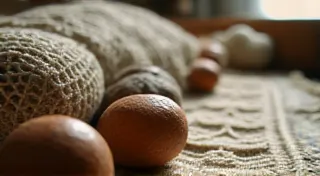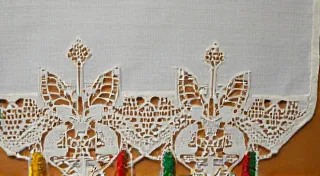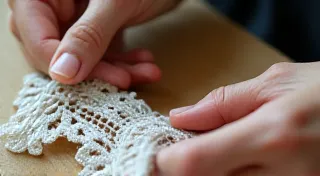Bobbin Lace in Home Decor: Curtains, Tablecloths, and More
Bobbin lace, a beautiful and intricate form of textile art, wasn’t just admired for its artistry; it was a vital and often lavish element of home decor throughout the 18th and 19th centuries. From elegant window treatments to exquisite table linens, bobbin lace added a touch of luxury and refined craftsmanship to homes across Europe and America. This article explores how bobbin lace was incorporated into home furnishings and provides some clues for identifying antique examples.
A History of Lace in the Home
Prior to the Industrial Revolution, lace was incredibly labor-intensive to produce, making it a significant investment for homeowners. While needle lace (such as Venetian or Bruges lace) held even greater prestige, bobbin lace offered a more accessible – though still demanding – method for creating beautiful embellishments. Wealthy households employed skilled lacemakers, or purchased lace from merchants, to adorn their homes. The value placed on bobbin lace meant that pieces were carefully preserved and passed down through generations. Understanding the historical context, and the social impact of textile production, offers a richer appreciation – some traditions reveal fascinating stories of resilience and community, which you can explore further in The Weaver's Alchemy: Transforming Humility into Heirloom – Stories of Resilience in Bobbin Lace Traditions.
The height of bobbin lace use in home decor was generally from the mid-1700s through the late 1800s. After the advent of machine-made lace, hand-bobbin lace became less common, though still cherished for its unique appeal. Its presence during the Victorian era influenced not only home décor but also fashion, demonstrating its widespread cultural significance.
Common Applications: Identifying Antique Table Linens
One of the most common uses for bobbin lace in home decor was to embellish table linens. Tablecloths, runners, doilies, and napkins were frequently adorned with intricate lace borders and inserts. When identifying antique bobbin lace table linens, consider the following:
- Size and Shape: Antique tablecloths were often quite large, reflecting dining customs of the time.
- Lace Pattern: Look for distinctive patterns like floral motifs, geometric designs, or repeating motifs. Different regions developed characteristic lace patterns. Regional variations in design not only reflected local tastes but also provided unique identifiers for their origin. If you’d like to delve deeper into these differences, explore Regional Variations in Bobbin Lace: Identifying Origins.
- Ground Fabric: Antique table linens were commonly made from linen or cotton. Examine the fabric closely for signs of age, such as discoloration or wear.
- Attachment Method: How the lace is attached is key. Older examples might be hand-sewn with a simple running stitch, or might be applied with a more complex "cordonnet" stitch (a type of flat stitch).
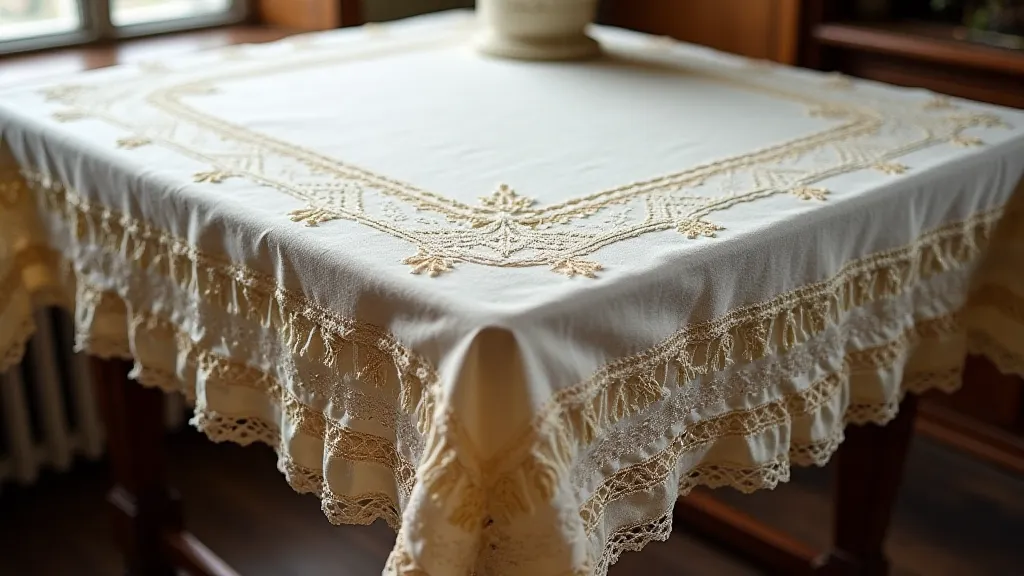
Window Treatments: Curtains and Valances
Bobbin lace was also widely used to decorate window treatments, including curtains, valances, and swags. These embellishments added a touch of elegance to any room. Examining antique bobbin lace window treatments requires paying attention to:
- Lace Width: Antique lace panels and valances often have specific widths, reflecting the size of windows at the time.
- Panel Construction: The way the lace is applied to the fabric can offer clues to its age. Older pieces might be hand-sewn, while later examples may show evidence of machine stitching.
- Fabric and Condition: Similar to table linens, the underlying fabric is crucial. Look for signs of age and wear.
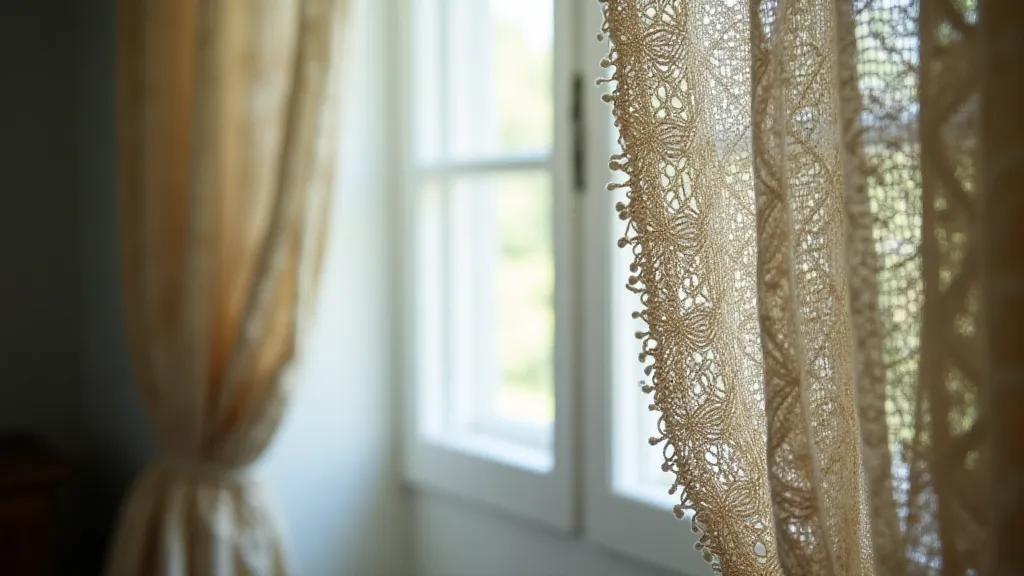
Dating and Identifying Marks
Determining the age of a bobbin lace piece can be challenging, but several factors contribute to the process. The intricate patterns and construction techniques evolved over time, offering visual clues to its era. Knowing the common construction methods of various styles helps narrow down the possibilities. For those interested in learning more technical aspects of dating these beautiful pieces, the article on Dating Bobbin Lace: Key Indicators & Techniques offers a deeper dive into these specific strategies.
Bobbin lace traditions varied significantly across different regions. For example, Belgian bobbin lace often features distinctive floral designs, while English bobbin lace might showcase geometric patterns. Careful observation of these regional characteristics can assist in identification. The evolution of these styles wasn’t random; it reflects a combination of local resources, cultural influences, and the transmission of skills across generations.
Occasionally, antique bobbin lace pieces might bear maker’s marks or labels. These markings can provide valuable information about the lace’s origin and age, but are relatively rare. These marks are like hidden treasures, offering a glimpse into the lives and businesses of the lacemakers themselves.
Preserving Your Antique Bobbin Lace
Antique bobbin lace is delicate and requires careful handling and storage. Avoid exposing it to direct sunlight, humidity, or harsh chemicals. Store pieces flat, wrapped in acid-free tissue paper, within a cool, dark place. Professional cleaning is recommended for valuable or fragile pieces. Gentle handwashing in cool water with a mild detergent is sometimes possible, but always test a small, inconspicuous area first.
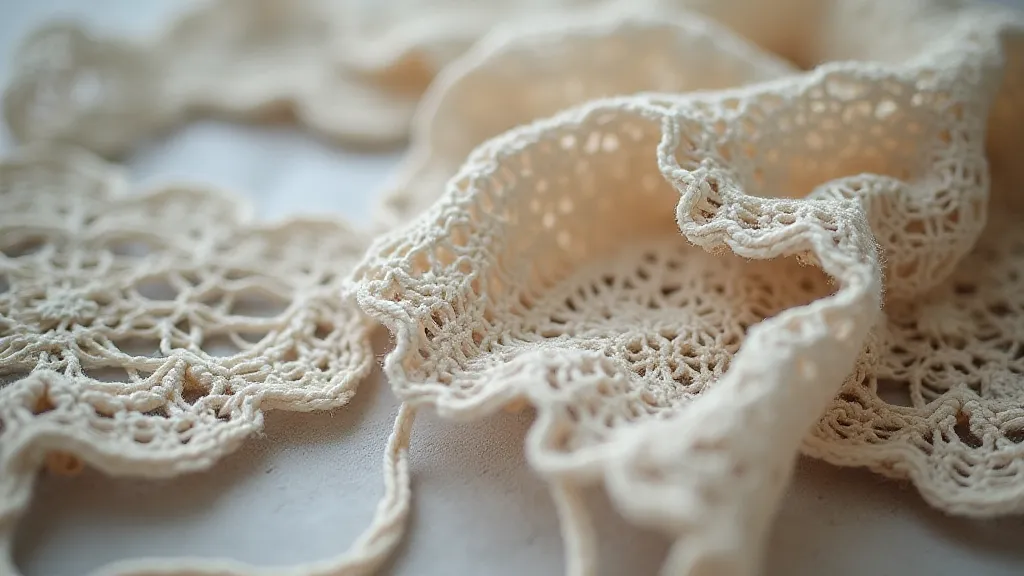
The skills and artistry involved in creating bobbin lace are a testament to human ingenuity and perseverance. From the delicate patterns to the intricate construction, each piece tells a story of tradition, craftsmanship, and cultural heritage. By understanding the history, characteristics, and proper care of bobbin lace, you can appreciate the beauty and craftsmanship of these treasured antique home furnishings.
The impact of the Industrial Revolution significantly altered the landscape of textile production, leading to a decline in traditional handcrafts. While machine-made lace became more accessible, it lacked the unique charm and character of hand-bobbin lace. Consequently, preserving and appreciating antique bobbin lace is not only about safeguarding beautiful objects but also about honoring the legacy of skilled artisans who dedicated their lives to this intricate art form. The fashion of the Victorian era was deeply influenced by these handmade treasures.
Further research into the historical context, regional variations, and preservation techniques can provide a deeper understanding and appreciation for the world of bobbin lace. Explore the intricacies of regional variations and learn more about the stories behind these incredible treasures. The preservation of these pieces also helps keep the stories of the people who created them alive for future generations to enjoy.
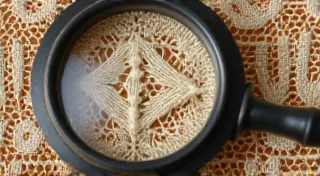

![The Influence of [Specific Cultural Element] on Bobbin Lace Design](/thumbs/bobbin-lace-cultural-influence.webp)
